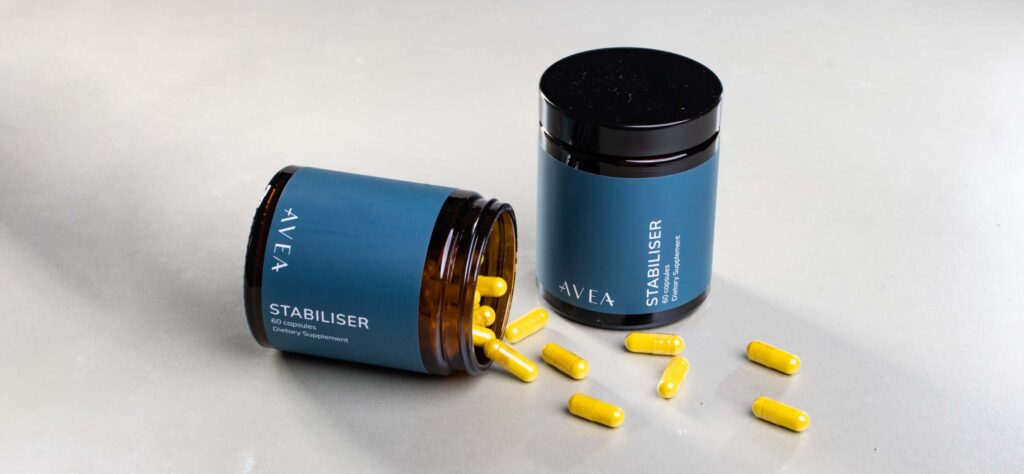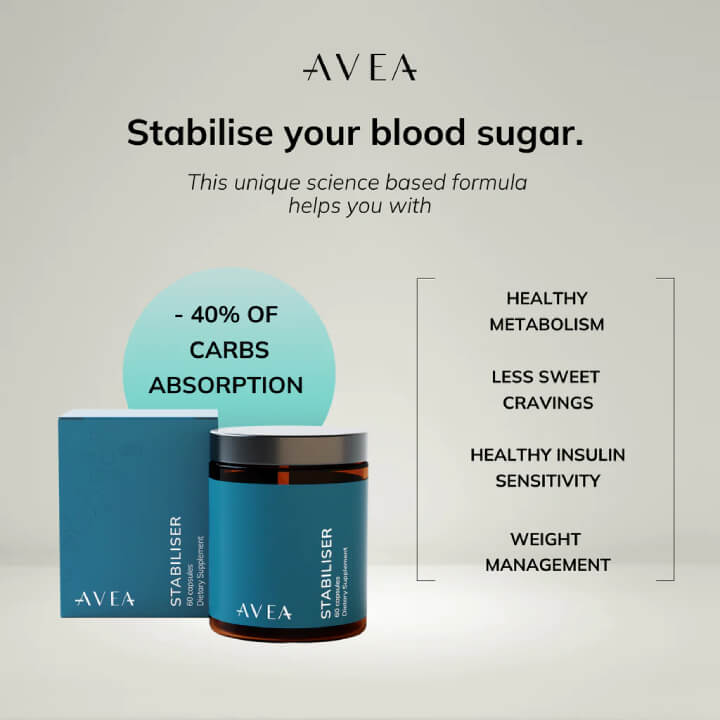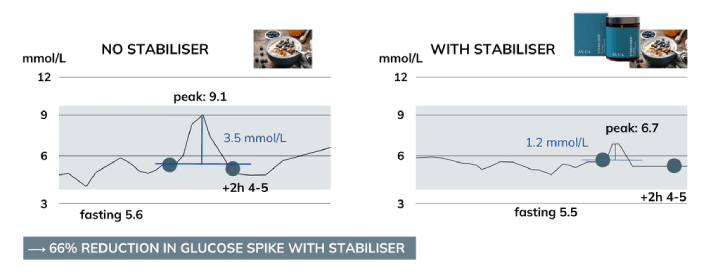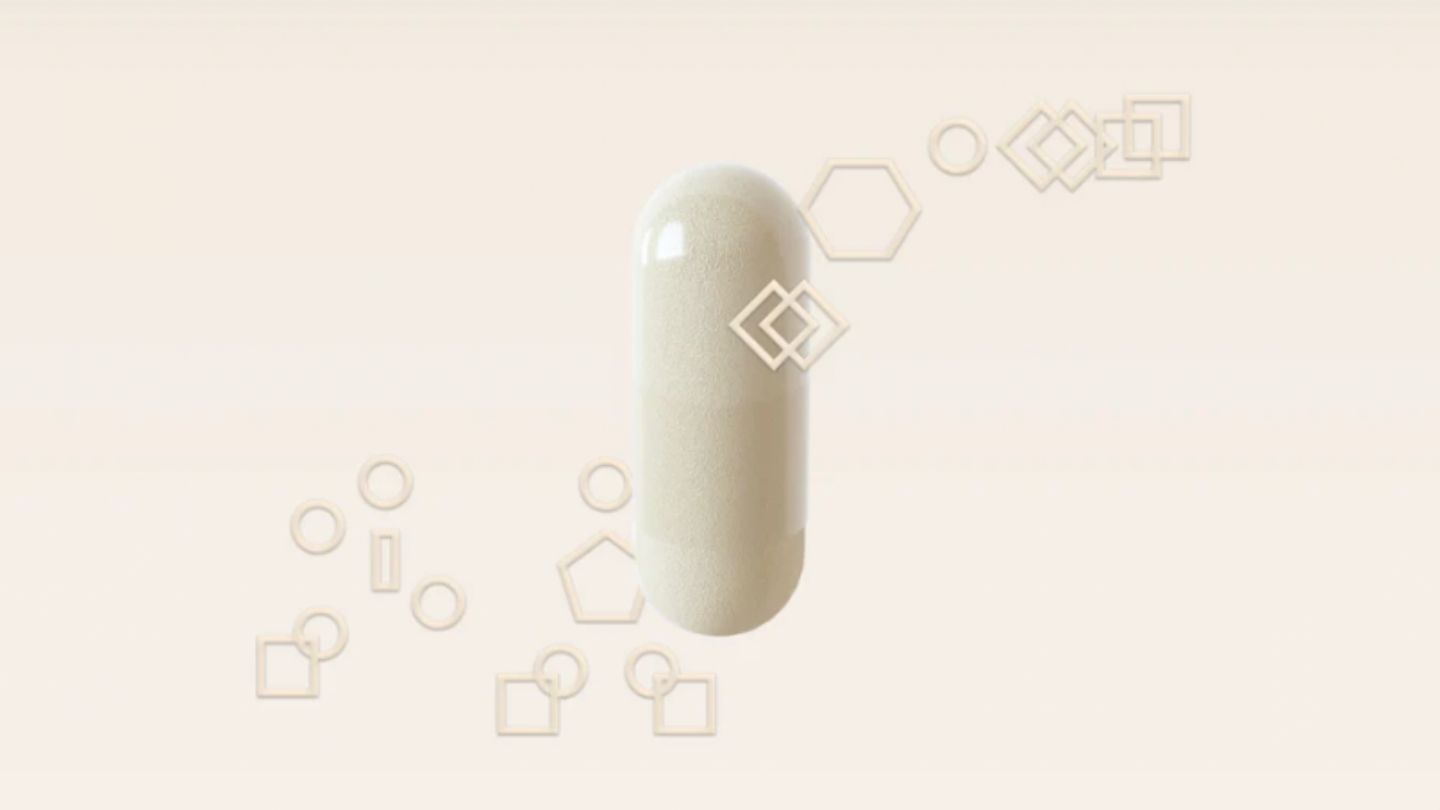Why is everyone talking about anti-spike pills? Must be because carrying a vinegar bottle everywhere you go, isn’t exactly that convenient. So, science joined the crowd.

As keeping your blood sugar stable should be a daily priority, cutting-edge technology has enabled the development of longevity supplements which have similar or even better, blood sugar control benefits than vinegar.
All with having natural ingredients, which have been explored for decades, and shown to be effective at the cellular level in studies.
You ready to learn more about those anti-spike, blood stabilising ingredients?
In this article
Free guide to reverse your biological age

- Master the science of rejuvenation.
- Apply proven tips to turn back the clock.
- Transform your health with top longevity specialists.
How are glucose spikes created?

Over 460 million people worldwide are affected by type 2 diabetes worldwide.
Whilst the underlying mechanisms leading to type 1 and type 2 diabetes differ, both conditions are marked by high blood sugar levels and carry an increased risk of heart-related deaths.
Certain meals can have an intense impact on your cells. Think of it as joining one of the most intense rides in the park, every 10 minutes.
Just as the roller coaster quickly shoots up to its highest point, your blood sugar levels spike dramatically right after you eat these types of foods.
And what goes up must come down. On the roller coaster, after reaching the peak, you swiftly plunge back down.
Similarly, after that initial surge, your blood sugar drops just as rapidly. This sharp decline can leave you feeling tired, irritable, and even a bit queasy, much like how you might feel as you get off that wild ride.
To keep the ‘roller coaster’ more steady and gentle (avoiding those big ups and downs)—you’re better off understanding what happens at the cellular level.
Your internal biological system prefers being on a scenic train ride in the park, having a smoother experience without the drastic highs and lows of a rollercoaster.
Now blood glucose spikes do not only occur because of the common table sugar. You might be shocked to know where all your glucose actually come from.
How are carbs broken down in your body?
Carbohydrates (carbs), are one of the three main macronutrients in our diet, alongside proteins and fats. They are essential for providing energy to your body, amongst various other functions.
Carbs are classified into three main types based on their chemical structure and complexity.
Without going too much into details, let’s understand their differences– they matter when it comes to blood sugar levels.
1. Monosaccharides
These are the simplest form of carbs, consisting of single sugar molecules. The most common monosaccharides include
- glucose (a primary source of energy for your cells)
- fructose (mostly found in fruits)
- galactose (part of milk sugar)
These sugars are absorbed directly into your bloodstream during digestion.
2. Disaccharides
These are formed when two monosaccharides are linked together. Common disaccharides include
- sucrose (table sugar, which is glucose + fructose)
- lactose (milk sugar, which is glucose + galactose)
- maltose (malt sugar, which is two glucose molecules)
Disaccharides are broken down into their monosaccharide components before being absorbed by your body.
3. Polysaccharides:
These are complex carbs, consisting of long chains of monosaccharide units. Polysaccharides include
- starches (energy storage form of carbs in plants
- glycogen (the storage form of glucose in animals and humans, stored in the liver and muscles)
- dietary fibre (which includes cellulose, a major component of plant cell walls).
Starches are broken down into glucose for energy, while fibre is mostly undigested and contributes to digestive health.

Glucose is vital for your body’s functions, but too much can lead to issues. It’s a delicate balance: your body needs to keep your blood sugar levels just right, neither too high (hyperglycemia) nor too low (hypoglycemia).
Your body has a sophisticated system for managing glucose levels. After you eat, carbohydrates break down into simple sugars, like glucose, which travel through your bloodstream, delivering energy to every cell.
The importance of blood glucose control
Understanding your body’s built-in mechanisms for regulating blood sugar is key. Insulin, a hormone produced by your pancreas, plays a central role in this process. It acts as a gatekeeper, allowing your cells to absorb glucose from the bloodstream for energy or storage.

Insulin is a hormone, consisting of 51 amino acids. It plays important roles in glucose homeostasis, cell growth, and metabolism.
When this system functions smoothly, your blood sugar levels remain stable. But in today’s world of processed foods and sedentary lifestyles, it’s easy for this delicate balance to be disrupted.
Modern diets, often laden with refined carbohydrates and sugars, pose a significant challenge to blood sugar management.
These fast-digesting foods can cause rapid spikes in blood sugar levels, followed by crashes that leave you feeling drained and irritable.
Over time, repeated exposure to these fluctuations can contribute to insulin resistance, weight gain, and chronic health conditions.
Learn more about insulin resistance here.
Why do glucose spikes matter?
In simpler terms, both type 1 and type 2 diabetes involve high levels of sugar in the blood, which can lead to serious health issues, particularly related to the heart.
Despite efforts to lower blood sugar levels, like using medications, the risk of heart problems remains high. This is what we call the “glucose paradox.“
Even though reducing blood sugar levels seems like it should help, studies haven’t shown clear benefits for the heart.
In fact, some treatments may even increase the risk of dangerously low blood sugar levels.
One reason for this paradox could be that it’s not just average blood sugar levels that matter. Spikes in blood sugar after meals, especially if they often happen, may be more harmful to your heart.
These spikes cause stress in your body, leading to inflammation and other problems that can damage blood vessels and increase the risk of heart disease.
Learn why glucose spikes are harmful.
Is there a best time to eat carbs?
Researchers explored how the timing and distribution of carbohydrates in meals affect blood sugar levels in individuals with type 2 diabetes.
They found that evenly spreading out carbohydrate intake throughout the day didn’t necessarily lead to the best blood sugar control.

Surprisingly, having carbohydrates at lunchtime seemed to result in lower peak blood sugar levels compared to other meal times.
Despite differences in carbohydrate distribution, overall blood sugar levels over a 20-hour period remained relatively consistent across the different meal plans.
Meals with lower carbohydrate content at breakfast and higher content at lunch appeared to offer more stable blood sugar levels throughout the day.
Interestingly, the study also highlighted how post-meal blood sugar spikes can contribute to cardiovascular risk in those with diabetes.
What are Continuous Glucose Monitors?
The introduction of Continuous Glucose Monitors (CGMs) has transformed how we understand glucose regulation.
With these high-tech devices providing real-time readings of tissue glucose levels, we’ve discovered that glucose dysregulation is more prevalent than previously thought.
Thanks to continuous monitoring, we’ve also gained insights into how certain foods can trigger spikes in glucose levels.
This knowledge can be used to empower yourself to avoid foods that cause significant fluctuations in your blood sugar levels. It can also help you rethink about your daily habits.
CGMs can be of great use, even for the non-diabetic populations. Checking your cardiovascular health is a must if you’re a health enthusiast and or an early adopter seeking potential health improvements.

Even for non-diabetics, experiencing hyperglycemia—characterised by elevated fasting blood sugar levels above 6 mmol/L and postprandial readings ranging from 7.8 to 10 mmol/L—can have serious consequences.
Besides, symptoms may not manifest for months or even years. So, it’s important to prioritise your metabolic health, even if you do not have prediabetes or diabetes.
Discover tech-enhanced longevity devices.
So, what are anti-spike pills?
Enter anti-spike pills—the innovative solution to the modern-day blood sugar dilemma. But what exactly are they?
These longevity supplements are designed to help mitigate blood sugar spikes, providing a protection against the rollercoaster ride of glucose fluctuations.
Available in various forms, from natural supplements to pharmaceutical options, anti-spike pills offer a range of approaches to blood sugar management.
Whether it’s harnessing the power of herbal extracts or leveraging cutting-edge pharmaceutical technology, these pills aim to keep your blood sugar levels on an even keel.
In this article, we’d like to introduce you to our personal favourites.
The best blood stabilising ingredients
Throughout history and across cultures, certain ingredients have been revered for their health benefits.
Chromium, Berberine, and White Mulberry Leaf extract are amongst these well-recognised molecules, each with a long-standing tradition of use in various medicinal practices.
Evolved alongside humans, these ingredients have been studied for their ability to support blood sugar regulation and overall health, maintaining their relevance through the ages.
White Mulberry Leaf (Reducose®)
A natural leaf extract that inhibits the absorption of sugars and carbs by up to 40% while you eat, turning fast sugar and carbs into slow ones.
Chromium Picolinate
One of the most bioavailable forms of the essential mineral Chromium, shown to improve blood sugar control by boosting carbs, proteins, and fats metabolism. May help in reducing hunger and cravings.
Berberine
A polyphenol found in various plants, shown to lower fasting blood sugar levels, support weight loss, and improve heart health by lowering cholesterol.
Our solution: the Avea Stabiliser
Our Stabiliser is a revolutionary natural blood sugar stabilising formula that blocks the absorption of carbs by up to 40% while you eat.
Our experts crafted this unique combination in the right dosages to safely and effectively balance your blood sugar levels. It consists of White Mulberry leaf extract, Berberine, and Chromium Picolinate.

Mechanism of action of Reducose®
It’s not sorcery, it’s science!
Reducose® is a leaf extract from the White Mulberry (M. alba) plant which has been used in traditional medicines in Asian countries since the dawn of time. This natural food ingredient is getting widely recognised for its multiple health benefits amongst the scientific community.
At a cellular level, Reducose® exerts its beneficial effects by turning fast sugars and carbs into slow ones. Basically, it binds to the enzymes which are needed to convert carbs into glucose. Result?
Your post-meal blood-sugar and insulin levels are reduced by up to 40%! With a lowered-insulin secretion, your cells are forced to effectively use fats and lipids as fuel, thereby also allowing for healthier weight management.
Reducose® also improves cognitive function since your brain actually thrives on lower insulin levels. The cherry on top with our Stabiliser supplement is that there have been no reported side-effects with
Reducose as it remains unaltered, and is easily excreted from your body. The undigested carbs end up as prebiotics in your gut microbiome allowing healthy bacteria to grow. It’s a win-win situation!
Why are we unique?
Our uniqueness also stems from the additional benefits brought in by Berberine and Chromium Picolinate, included in our Stabiliser alongside Reducose®.
As a whole, the 3 chosen ingredients work in synergy to safely boost your body into a fat-burning mode, further helping you maintain a healthy blood-sugar level.
For instance, while Berberine will act by lowering your fasting glucose levels, Reducose® will act on your post-meal glucose levels. To top it off, Chromium will assist by considerably increasing your insulin activity. Our stabiliser is the ultimate key to a healthy heart and a healthy weight!
Benefits you can expect with the Stabiliser
- Blocks carb and sugar absorption
- Helps lower post-meal sugar spikes
- Increases satiety and curbs sweet cravings
- Promotes healthy insulin sensitivity
- Supports weight management
- Facilitates entering and maintaining ketosis
Real-time benefits from CGMs

Glucose spikes are sharp rises and falls in blood sugar which can wreak havoc on your energy and long term health. Our Stabiliser shows immediate blood-glucose stabilising effect. This can be easily monitored in real-time with a Continuous Glucose Monitor (CGM).
| Chocolate Muffin | 60% glucose spike reduction* |
| Sushi Plate | 75% glucose spike reduction* |
| Simple Porridge | 66% glucose spike reduction* |
| Veg Fried Rice | 56% glucose spike reduction* |
Even the Glucose Goddess herself recognised the need for effective blood sugar management solutions, which led her to develop her own line of anti-spike pills, named “Anti-Spike Formula.”
With her unparalleled expertise and dedication to promoting metabolic health, the Glucose Goddess carefully curated a formula designed to stabilise blood glucose levels and mitigate spikes effectively.
Discover the top 10 Glucose Goddess hacks.
Key note from Avea
So, here’s the deal: managing your blood sugar is as important as any of your goals for this year.
And those anti-spike pills you see everywhere? They might be one of your best friends when it comes to maintaining stable blood glucose levels.
At Avea, we develop each product with a premium blend of ingredients, chosen for their potency, bioavailability and purity. Our science-driven formulas ensure synergistic benefits for optimal efficiency.
Now, it’s your turn. Make a health-conscious decision today. You deserve it all!
















